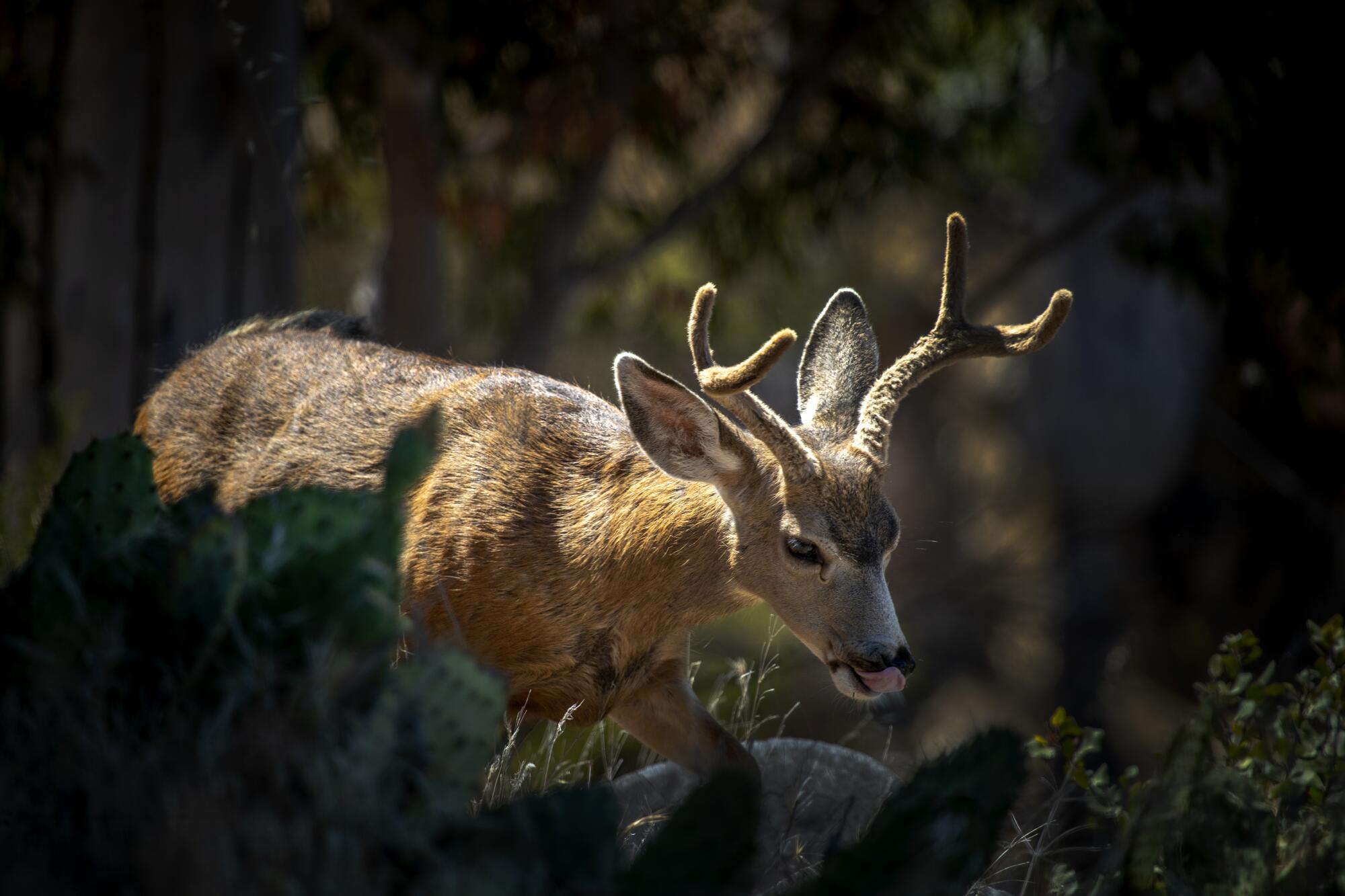
- Share via
AVALON, Calif. — A plan to use helicopter-mounted sharpshooters to kill nearly 2,000 invasive mule deer roaming the mountains of Santa Catalina Island has ignited a storm of protest among residents of the popular resort destination and prompted calls for state wildlife officials to block the hunt.
The Catalina Island Conservancy — the nonprofit that manages 90% of the island and is mandated to return it to its natural state — says the mass culling is necessary to protect Catalina’s native plants and grasses, which have been devastated by herds of foraging deer.
Recurring cycles of extreme drought and wildfire have also taken a toll on back country vegetation, forcing emaciated deer to seek sustenance in developed areas of the island, where they come into conflict with humans and pets, officials say.
“The island and the deer are both fighting for survival and neither one is winning,” said Whitney Latorre, 44, the conservancy’s chief executive officer.
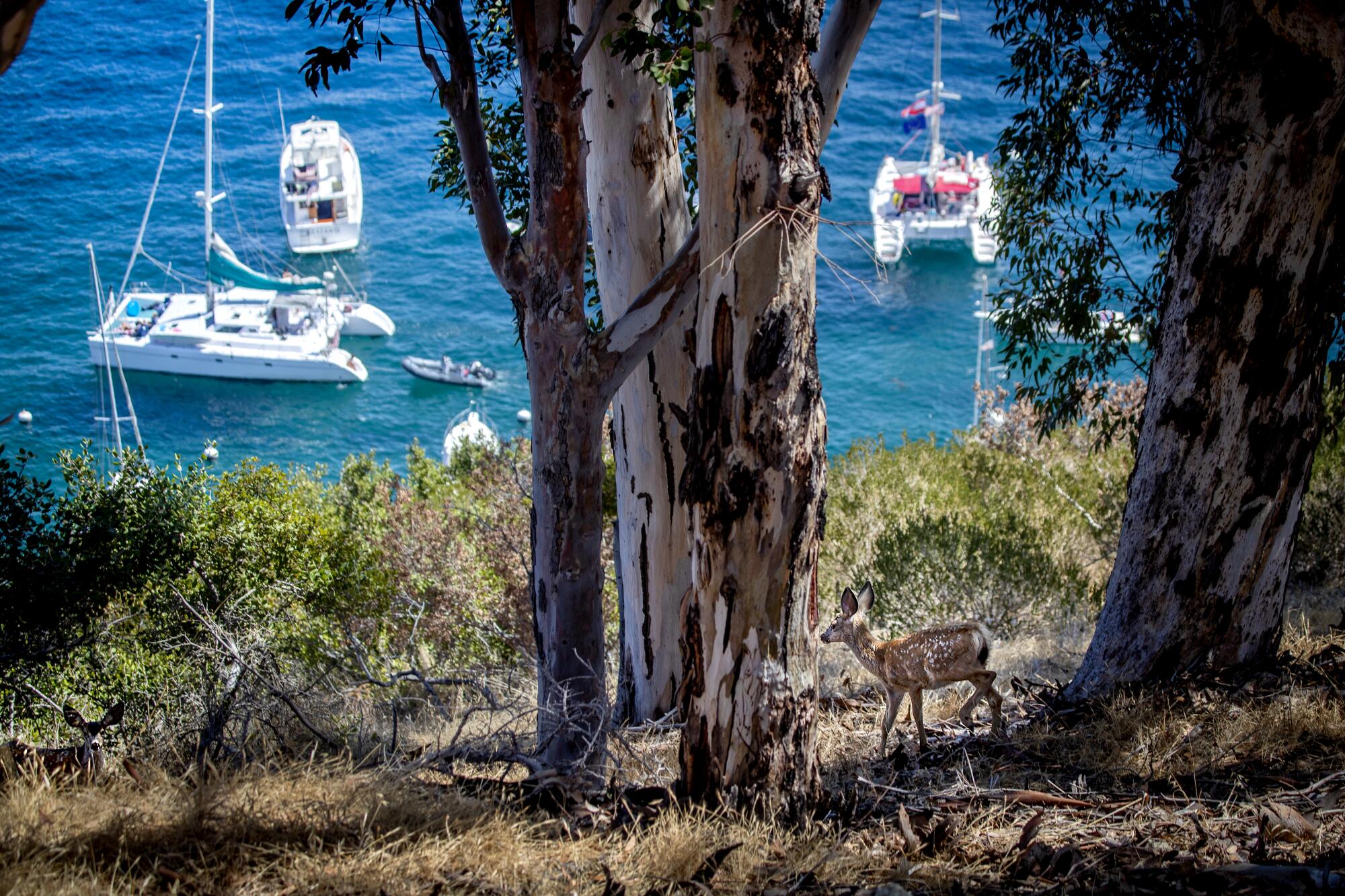
“Unless we address the deer issue, the island will become more and more vulnerable to the devastating consequences brought on by rising temperatures and drought,” she said.
The deer hunting plan is just the latest in a long string of attempts to impose some form of ecological order on the fragile and beloved island just 22 miles off the coast of Southern California. At one point or another, a menagerie of imported goats, bison, swine and other animals have all threatened to overwhelm those species native to California’s Channel Islands.
According to conservancy officials, mule deer are the most destructive invasive animal left on Catalina. Intense grazing by deer has placed increasing stress on native plants and paved the way for the spread of highly flammable invasive weeds, such as flax-leaf broom.
Aggressive and impactful reporting on climate change, the environment, health and science.
The deer also amble into the harbor community of Avalon, where they feast on home gardens, attack pets or become entangled in lawn chairs and soccer nets.
“We understand that this is a bold and ambitious restoration project — and it will take courage to see it through, no doubt about it,” Latorre said. “The right things to do aren’t easy.”
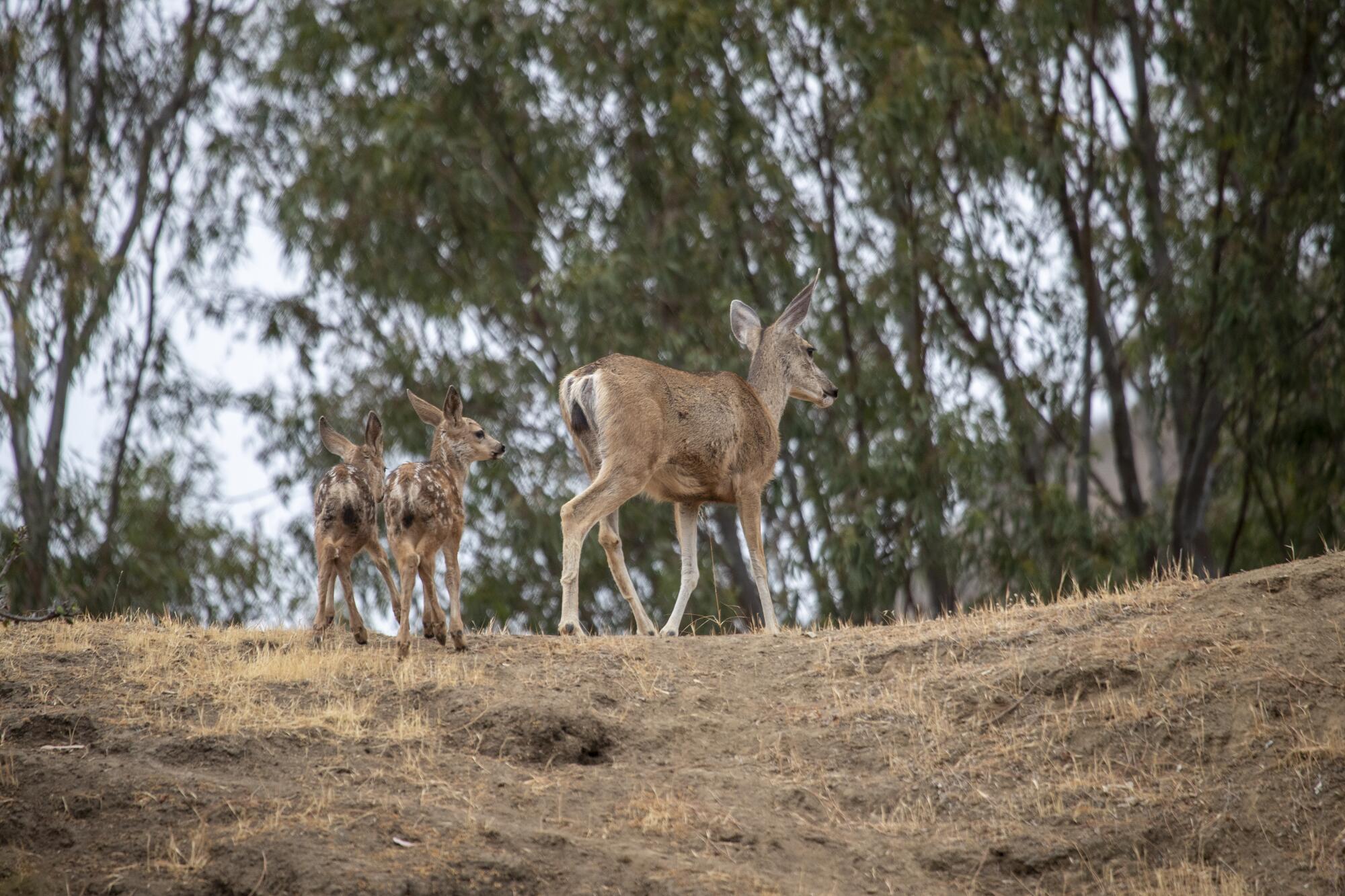
That kind of talk has ignited deep passions on and off the island where more than 2,000 people have signed a petition urging the California Department of Fish and Wildlife to reject the conservancy’s application to eradicate mule deer.
“We are completely against the slaughter of innocent mule deer on Catalina Island,” said Dianne Stone, vice president of the Catalina Island Humane Society. “The Conservancy’s solution is violent and ugly.”
Opponents of the plan say most residents want the deer to remain on the island.
“Ninety percent of us don’t want the deer to go away, but the conservancy has concluded that the only good number of deer in Catalina is zero,” said resident William Flickinzer.
Avalon Mayor Anni Marshall would not go that far. But in an interview, she chose her words carefully.
“From the city’s perspective, climate change brought drought to the island, forcing deer to wander into Avalon in search of water,” she said. “The heartbreak is that they are not always successful and their survival rate is poor.”
She said the city has been forced to “deal with those suffering animals and dispose of their carcasses.”
Although many residents want the California Department of Fish and Wildlife to intervene, a spokeswoman said the agency was “supportive of the habitat restoration project.”
“The goal of the project is to restore ecosystem function and preserve Catalina’s unique and rare biodiversity including some of the rarest plant species in our state and beyond,” said Jordan Traverso.
“The project aims to propagate native flora and fauna, which, in turn, improve climate and wildfire resiliency,” she said.
The conservancy plans to hire sharpshooters from the nonprofit White Buffalo Inc., of Connecticut, to begin eradicating the deer next fall. Hunters will use AR-15 style rifles with non-lead bullets, so that animals that scavenge the carcass will not be poisoned.
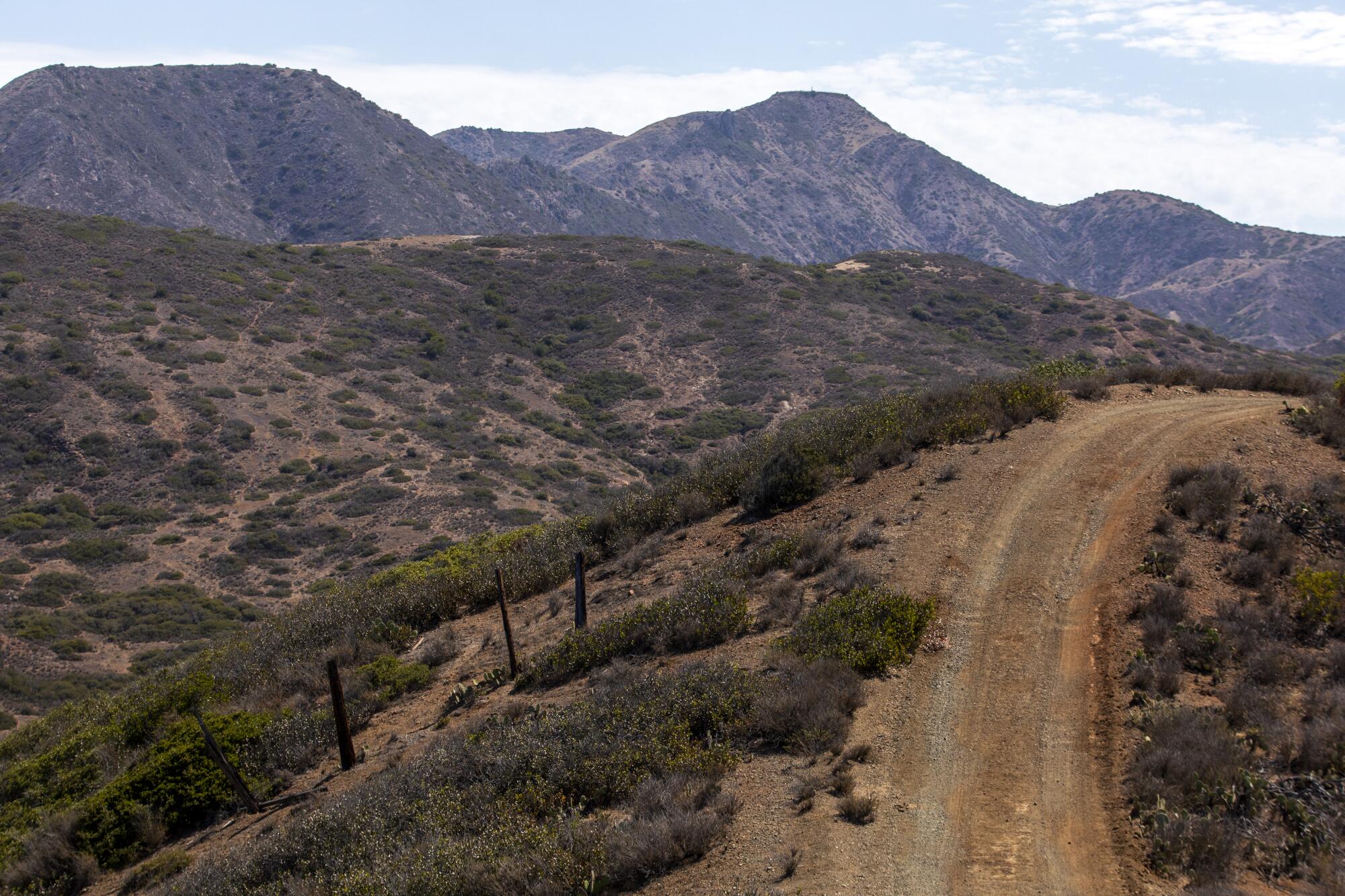
Hunted deer will be left where they lay because trying to airlift the carcasses out of the rough, nearly inaccessible island interior would be dangerous and costly, officials said. However, conservancy and state officials intend to remove carcasses from the vicinity of Avalon and roadsides.
In years past, battles erupted over the eradication of thousands of goats and feral pigs. By then, the animals had left scars on the landscape that may never heal: thousands of intricate goat trails crisscross the precipitous mountainsides, entire groves of ironwood and California lilac have disappeared, and the denuded canyons are eroding.
Mule deer were introduced to the island in the early 1930s with a goal of increasing wildlife and as a hunting resource. With no predators to thin the herds, deer have competed with the island’s native wildlife ever since, wreaking havoc on habitat.
But persuading critics to appreciate the sorry plight of native plants has been a struggle for environmentalists.
Lauren Dennhardt, 34, senior director of conservation at the conservancy, has spent the last three years roaming Catalina’s backcountry to monitor the health of native plant species.

On a recent morning, Dennhardt stood in a remote 10-acre sanctuary and gestured toward growths of Santa Catalina Island manzanita, island mountain lilac, blooming island rush-rose and Channel Island tree poppies. “This is what we want much of the island to look like,” Dennhardt said.
Just beyond the plants, a fence loomed.
“This fence protects more than 60 species of native plants — many of them browsed into oblivion by deer everywhere else on the island,” she said.
“Once the deer are gone, we can focus all of our attention on one of the most ambitious and large-scale ecological restoration projects ever attempted in California: restoring Catalina Island to a semblance of its natural state.”
Past proposals to reduce the deer herds have included the sublime and the ridiculous. One called for introducing apex predators, such as mountain lions.
“That was a potential option,” Latorre said. “We’re not doing that, of course, because it’s crazy. The introduction of a major nonnative predator could unleash cascading repercussions.”
While satellites and offshore buoys can inform scientists about marine heat waves, the effects on ocean species are less understood.
Under its hunting program, the conservancy allows hunters to take about 200 deer a year. However, biologists say that’s not nearly enough, given that each doe produces two fawns each year.
Deer have become such a common sight on the island that visitors routinely feed them. At Avalon Harbor, they toss ice cream, French fries, hot dogs and candy at the animals as they walk onto the beach.
And near the swank Descanso Beach Club, dozens of deer converge on a wooden box filled with bowls of water and pet food at dusk.
Biologists say deer like the salt found in cat food, but it lacks vitamins and can lead to bloating and fatal digestive disorders in the herbivores.
A sign at the site warns that feeding deer is “illegal and dangerous.”
The eradication proposal signals a new direction for the conservancy on an island that attracts more than 1 million visitors a year — one that embraces restoration of relatively obscure native species over the costly business of maintaining high-profile beasts such as bison.
Just three years ago, the conservancy announced plans to boost tourism by adding bison to existing herds of the shaggy imported animals, which are descendants of 14 left here in 1924 by a movie crew.
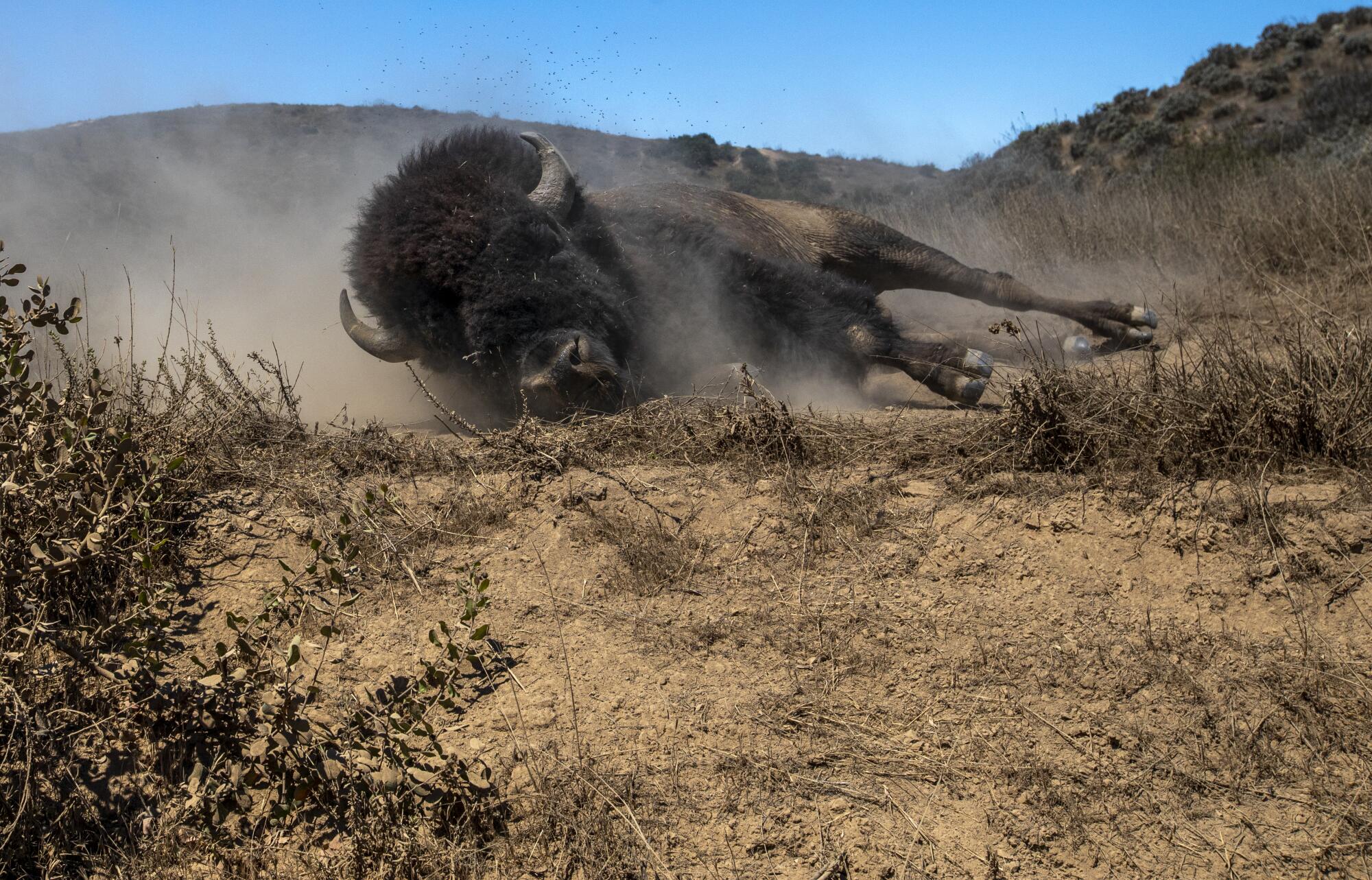
Locals cherish the bison as living symbols of simpler times. Homes in Avalon neighborhoods are festooned with painted images of bison. Gift shops sell furry bison figurines, and sand dollars are etched with bison silhouettes. Catalina’s marathons are advertised under colorful bison logos.
But the conservancy is no longer bullish on bison. Reducing the herd was recommended in 2003, when there were 350 bison on the island. A scientific study concluded that foraging and wallowing bison were trampling native plant communities; altering tree canopies by rubbing against tree trunks; and undermining weed management efforts by dispersing nonnative grasses through their droppings.
Today, there are only about 90 bison left, and the conservancy no longer promotes them in advertising campaigns.
Instead, it trumpets such conservation success stories as the Catalina Island fox, which has made one of the most remarkable recoveries known for an endangered species. After nearing extinction amid an epidemic of distemper, the population has rebounded to about 2,000.
“Some folks may not like it,” Dennhardt said, “but we are committed to putting this landscape and its natural inhabitants back together.”









